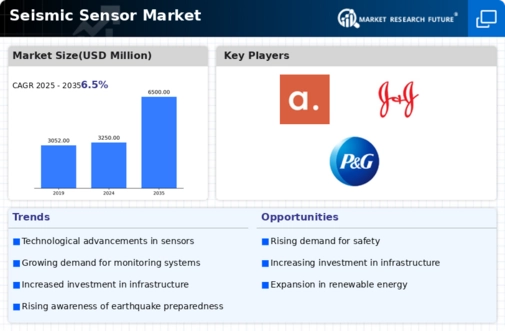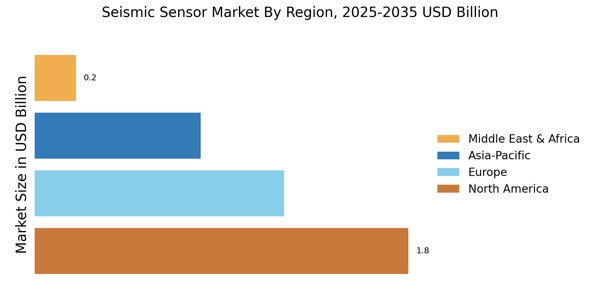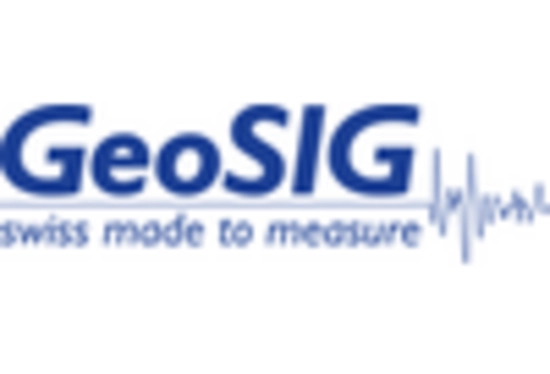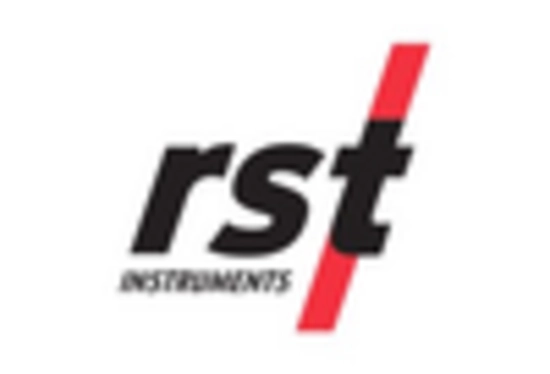Expansion of Renewable Energy Projects
The Seismic Sensor Market is also benefiting from the expansion of renewable energy projects, particularly in wind and geothermal energy sectors. These projects often require extensive geological assessments to ensure site suitability, which in turn drives the demand for seismic sensors. As countries strive to meet renewable energy targets, the need for reliable seismic data becomes paramount. The market is projected to see a significant uptick in sensor installations, with estimates suggesting a growth rate of around 6% annually in this segment. This trend indicates that the Seismic Sensor Market is not only responding to traditional applications but is also adapting to the evolving landscape of energy production.
Growing Adoption of Smart City Initiatives
The Seismic Sensor Market is poised for growth due to the increasing adoption of smart city initiatives. These initiatives often incorporate advanced technologies, including seismic sensors, to enhance urban safety and resilience. By integrating seismic monitoring systems into urban planning, cities can better prepare for and respond to seismic events. The market is likely to witness a surge in demand as municipalities recognize the value of real-time data in disaster response and urban management. Projections indicate that the smart city market could reach USD 2 trillion by 2025, thereby providing a substantial opportunity for the Seismic Sensor Market to expand its footprint in urban environments.
Rising Awareness of Earthquake Preparedness
In recent years, there has been a notable increase in awareness regarding earthquake preparedness, significantly impacting the Seismic Sensor Market. Governments and organizations are investing in early warning systems to mitigate the risks associated with seismic events. This heightened awareness is reflected in the growing demand for seismic sensors, which are essential for monitoring seismic activity and providing timely alerts. According to recent estimates, the market for seismic sensors is expected to reach USD 3 billion by 2026, as more regions recognize the importance of proactive measures in disaster management. This trend suggests that the Seismic Sensor Market will continue to expand as communities prioritize safety and resilience against natural disasters.
Technological Advancements in Seismic Sensors
The Seismic Sensor Market is experiencing a surge in technological advancements, particularly with the integration of cutting-edge materials and innovative designs. These advancements enhance the sensitivity and accuracy of seismic sensors, making them more effective in detecting ground movements. For instance, the development of MEMS (Micro-Electro-Mechanical Systems) technology has led to smaller, more efficient sensors that can be deployed in a variety of environments. As a result, the market is projected to grow at a compound annual growth rate (CAGR) of approximately 7% over the next five years, driven by the increasing need for precise monitoring in both urban and rural settings. This trend indicates a robust future for the Seismic Sensor Market as it adapts to the evolving demands of various sectors.
Increased Investment in Infrastructure Development
Investment in infrastructure development is a critical driver for the Seismic Sensor Market. As urbanization accelerates, the need for robust infrastructure that can withstand seismic events becomes increasingly apparent. Governments and private entities are allocating substantial budgets for the construction of earthquake-resistant buildings and bridges, which necessitate the integration of seismic sensors for monitoring structural integrity. Recent reports indicate that infrastructure spending is expected to exceed USD 4 trillion by 2027, creating a favorable environment for the Seismic Sensor Market. This investment trend suggests a sustained demand for advanced seismic monitoring solutions as stakeholders prioritize safety and resilience in their projects.

















Leave a Comment